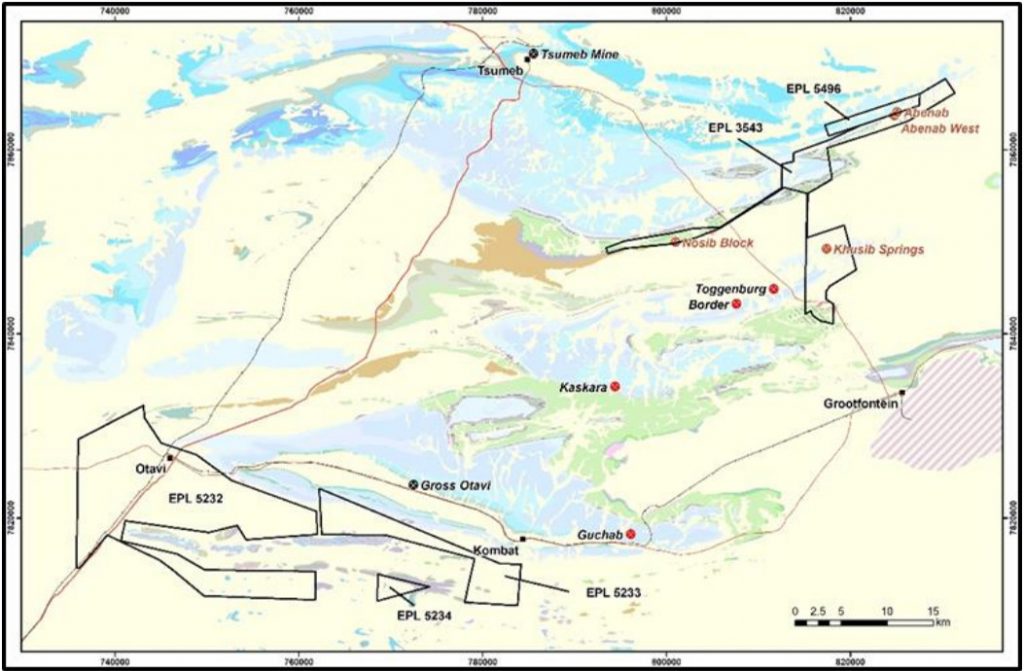Abenab Mine History
The Abenab Mine operated as an open pit and underground mine from 1921 to 1947 by South West Africa Company primarily for the lead-zinc. It is possibly the largest known and highest-grade deposit of vanadate ore in the world.
Initial production was 30 to 80 tonnes of high-grade vanadium ore, recovered by blasting and hand-sorting. By 1923, the mine had been developed and was operating at a production rate of 1,000 to 2,000 tonnes per annum.
The pipe was mined to a depth of about 215m until reduced grades and the flow of underground water rendered further mining uneconomic.
Following the mine closure, exploration was conducted by companies including Tsumeb Corporation, Anglo American, Japanese International Cooperation Agency (JICA) and Avonlea Minerals. Work comprised several phases of RC and diamond drilling, trenching and geological mapping. In 2011-2012, Avonlea drilled nine diamond holes for 2,597m over two campaigns.
Historical mines at Abenab included:
• Abenab (produced 102,000 tonnes concentrate @ 18% V2O5, 13% Zn, 42% Pb)
• Abenab West (produced 74,000 tonnes concentrate @13% V2O5, 72% Pb).


